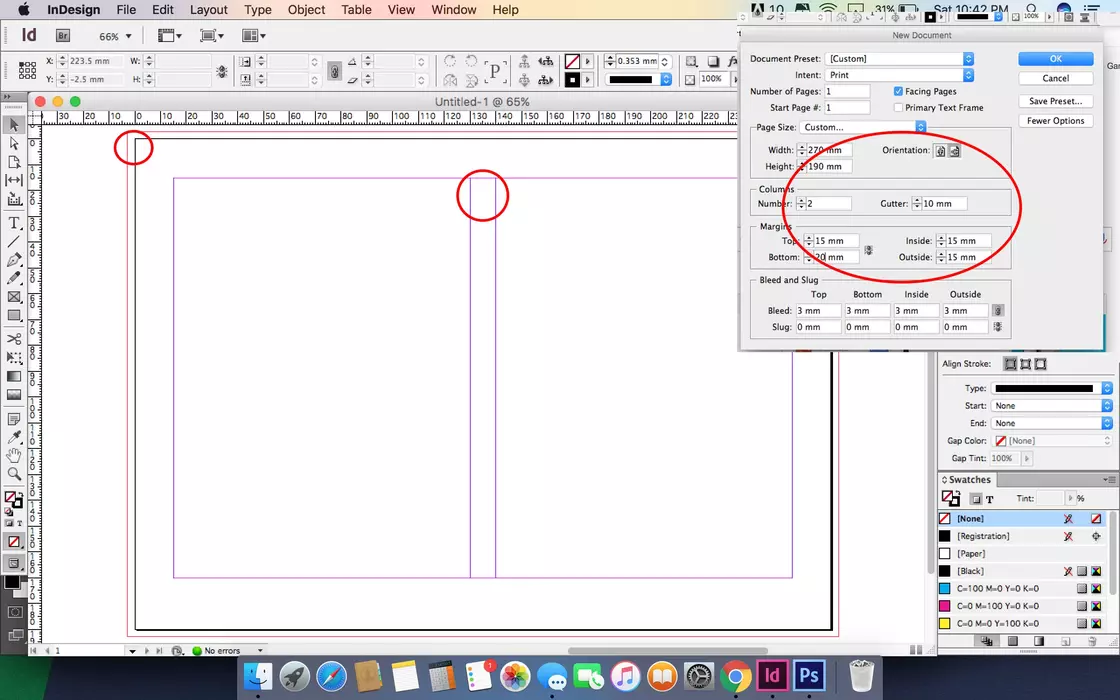Since there are many options for printing comics available now, knowing about comic book dimensions is essential for authors. The comic is a book genre that has large fans. Selecting the right format, dimensions, and binding can contribute to the success of transforming your physical comic book.
Standard Size of Comic Book

The book’s dimensions consist of the width and height of its finished form. Standard comic book dimensions today has 10 -¼ inches in length and 6-5/8 inches in width. Although there is a standard size to print a comic, you still can use any dimensions to fit the graphic panels.
Publishers even produce comic books with more than one size. It is because no strict rule that enforces publishers or authors to only stick with the standard size. It is still flexible to select a comic size that meets your preference like what we see in the development of comics throughout history.
The authors usually take advice from the printer that may offer size suggestions to lower the production and distribution costs. Even a few small changes in the design at the beginning may help authors to save big costs at the end.
Trends in Comic Book Dimensions

Historians divide the history of a comic book into several ages which can help you to understand how their dimensions change over time. Each era showed a change in trends that in particular years. Besides, each has specific characteristics and enables us to understand the difference in comic book dimensions.
-
Golden Age
The Golden Age is the first period of comic book development that started in 1938. This age marked by the launching of Superman in Action Comics and continued up to 1956. It set out as the Platinum Age ended. However, Platinum Age was less popular because only a few people collected comics during that time.
The initial comic book in the Golden Age consisted of 64 pages which adequately contained 4 or 5 adventures on the covers. In this age and several ages ahead, comic book dimensions had a consistent length of 10-1/2 inches or around 26.7 cm.
However, the width of comic books was narrower over time. Comics published in the Golden Age usually had a width of 7-3/4 inches or around 19.7 cm.
-
Silver Age
As the Golden Age ended, comic development entered the Silver Age in 1956. The Silver Age is the most popular era among comic collectors today due to the iconic characters that appeared during this time. Those who collect comics from this era usually have a good knowledge of comic history and many characters.
This era started with the launching of DC Comics and has many stories on the origins of comic characters. Some comic characters are still famous today and have even been relaunched. Those characters even appear in many movies, TV programs, and video games so they have huge fans.
Comic book dimensions in the Silver Age still had the same length as the previous era was 10-1/2 inches or 26.7 cm. However, there was a reduction in its width became 7-1/8 inches or around 18.1 cm. It was slightly thinner than the previous size.
-
Bronze Age
The Bronze Age started in 1970 until 1985 and in this era, changes happened in the dimensions and comic themes. In this era, the comic theme changed from a light to a more serious plot. Comic books began to include more current topics like drug abuse and war.
That is why the Bronze Age extended the types of comic genres. It started to put something relevant for all mindsets and ages, making the comic book have more sophisticated stories. The theme change first appeared over 15 years throughout the comic development history.
Another change during this age also happened to the comic book dimensions. Although it still had the same length at 10-1/2 inches or 26.7 cm, the width of the comic book slightly increased to 7-1/4 inches or 18.4 cm.
-
Modern Age
The Modern Age began around 1998 and continues to the present. Before the Bronze Age turned into the Modern Age, there was a transition era called the Dark Age that was popular with the dystopian societies in the stories. It showed the change, injury, retirement, and death of the heroes.
This transition was short and the comic era entered the Modern Age. This era marked a new title for the Justice League franchise as DC reimagined it into something fresher. Authors are free to create a good story without holding the ideas of previous events.
There was a significant change in comic book dimensions. The height remains the same as the previous era at 10-1/2 inches or 26.7 cm. However, the width decreases much up to 6-7/8 inches or around 17.5 cm.
Other Formats for Comic Books
Remember that publishers apply different formats when producing comic books like graphic novels, modern trade paperbacks, mangas, and magazines. Each format has different dimensions. Even magazine format offers two sizes, regular and thick.
The regular magazine size has 8-1/2 inches in width by 11 inches in length while the thick size has 8-3/4 inches in width by 11 inches in length. Trade paperback format that refers to a new format of story collections also provides two possibilities; 6.525 x 10.25 inches and slightly bigger 6.75 x 10.375 inches.
Mangas that are popular in Japan has a format that comes in many sizes. The most common comic book dimensions for mangas are 5.06 inches in width x 7.17 inches in length or 5.83 inches in width x 8.2 inches in length.
The Difference between a Comic Book, a Manga, and a Graphic Novel
Those three formats present illustration-based storytelling but you can discover a few differences among them. Comic books consist of extracts from serialized narratives. The publication of comic books is more frequent and you can find new printouts monthly or weekly.
Meanwhile, graphic novels usually are longer and present complete narratives. The publication of graphic novels is different from comic books because they likely do not come with a schedule. Besides, publishers tend to print graphic novels in any dimensions they prefer.
Manga includes Japanese comics that presented in the English version. What makes manga unique and a bit different from its counterparts is how you read it. You usually read manga from light to left same with its original version that comes in series and contains several volumes.
Knowing the comic book history and how it affects the comic book dimensions is fascinating. As you learn the shifts in the dimensions over time and their comparison with different formats, it will be easier for you to select a comic book. It can help authors to improve their journey in making comics.

Morgan Azhari, the owner of PrinterUpdate.net, is a dedicated expert in the field of printers, leveraging a wealth of experience and education to create a platform that passionately shares insights and solutions.
With a goal to enhance the printer user experience, my vision for the website is to provide valuable content, making a positive impact on individuals navigating the complexities of printers.